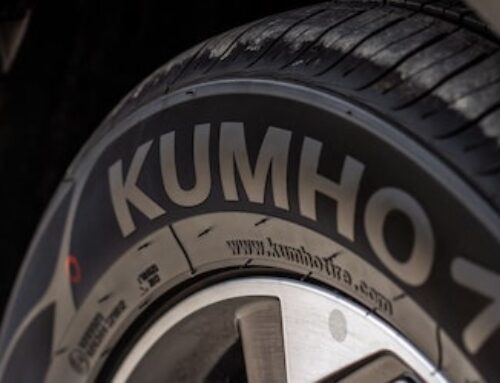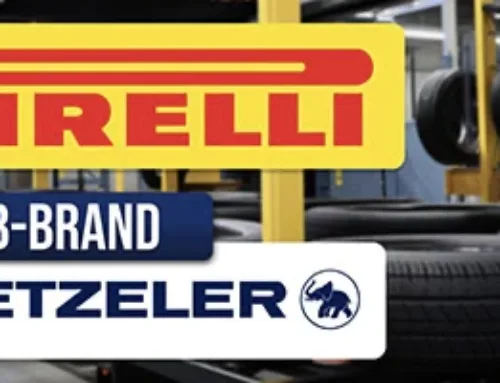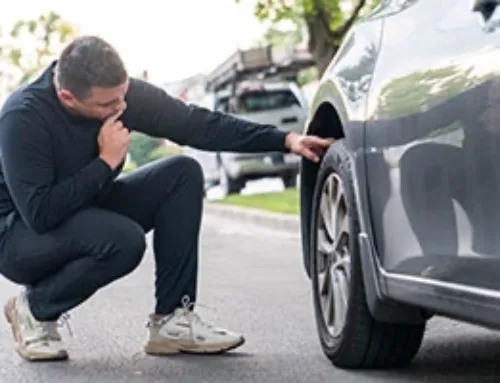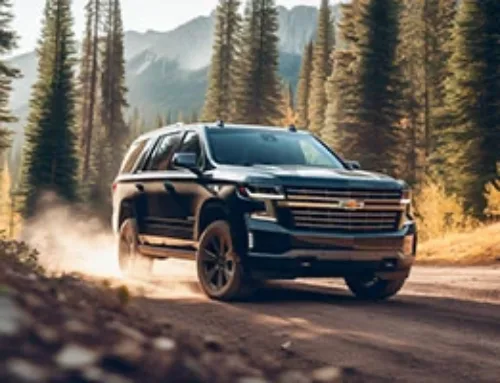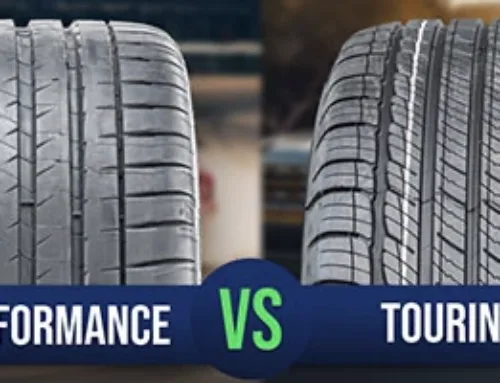Table of Contents
You need to get a new set of tires, but you are unsure which kind to get. You might be thinking that all types of tires are the same and the only difference is the brand, but in reality, there are many different types of tires, and each has a specific design and function. Choosing between all the different types can be confusing and daunting. But fear not! We’ll review some of the more common (and less common) types of tires and help clear up any confusion.

3 things to consider before buying a fresh set of tires
Knowing the differences between all types of tires for cars can help you select a set that will improve your car’s handling in dangerous or challenging road conditions, as well as save you money at the pump. Before we get started, it’s important to consider a few things:
- The type of vehicle that you own (sedan, SUV, min-van, truck, ATV, etc.)
- The conditions you typically drive in (snow, hot, wet, dry, etc.)
- The terrain you expect to drive on (highway, off-road, mud, etc.)
Don’t let the best tire deals & tips roll by!
Sign up for our newsletter
Tires for standard vehicles: all-season, summer, touring, winter
For most standard vehicles (sedans, mini-vans, coupes, hatchbacks, etc.), there are a variety of car tires to choose from. These are distinguished mainly by season and the weather conditions they are meant to handle. Some variations include rubber compounds used, tread patterns, tread depth, traction, and durability.
All-season tires
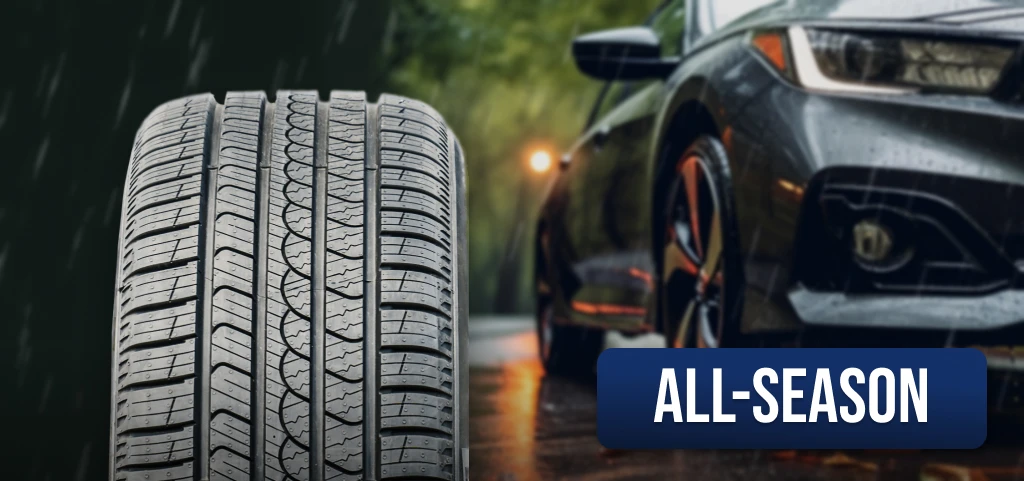
All-season tires are the backbone of the tire industry. The majority of car manufacturers will equip all new vehicles with a set of all-season tires for a good reason. These tires will perform in various weather conditions and give you a smooth ride even at high speeds. The tread pattern is complex and made to provide traction in both wet and dry conditions.
All-season tires can be your bread and butter, but they will start to lose performance in more extreme conditions. These tires are for general-purpose driving. If you often encounter frigid winters, lots of snow, or even very hot conditions, supplement a pair of all-season tires with some of the seasonal specialists coming up next.
Winter tires
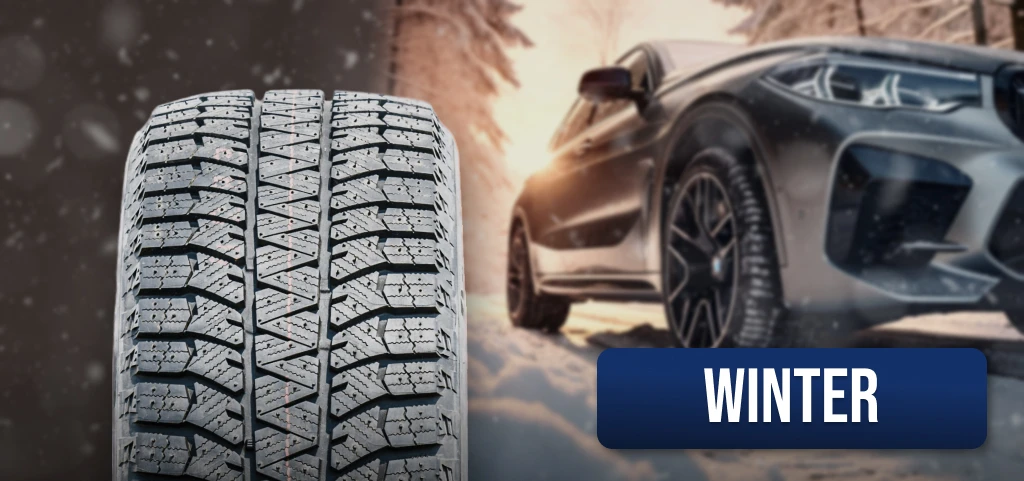
Winter tires have several features which allow them to function better than all-season tires in wintry conditions. The first thing you will notice is the tread patterns. The tread is significantly deeper, and the edges of each block of tread are sharper, allowing the tread to dig into snow and ice more effectively. Within the tread, tiny incisions and grooves, known as sipes, increase surface area and traction.
However, the beefed-up treads do not all make winter tires special: they also contain a special compound in the rubber that allows the tread to stay soft and pliable even in freezing conditions. For winter conditions, you will feel a significant difference in performance from your dedicated winter tires.
Summer tires
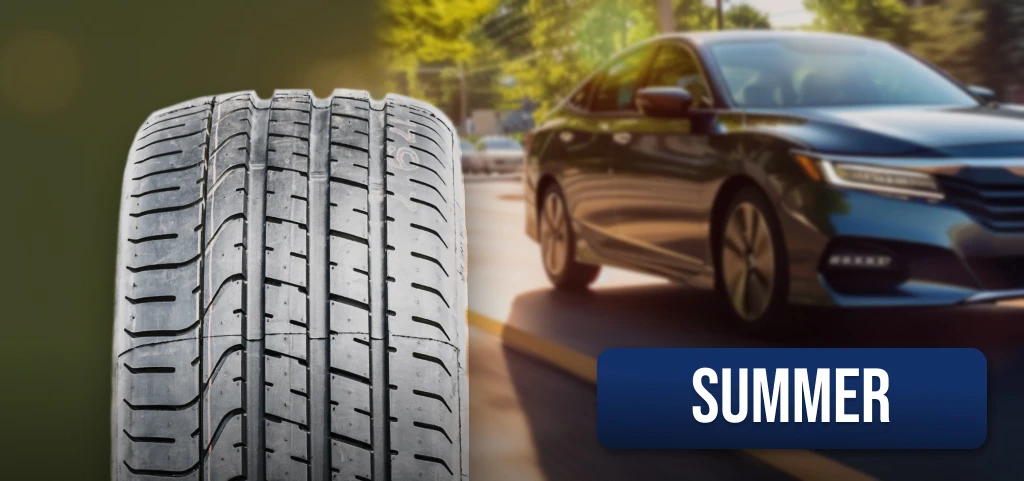
As the name suggests, summer tires perform best in hot, summer-like conditions. Summer tires are able to withstand hotter road conditions for longer periods of time. Due to an additive in the rubber, the tread of a summer tire is stickier, which gives it better wet-weather traction.
Most summer tires will have grooves in the tread which funnel water to the sides, helping the tread to maintain solid contact with the road surface. This results in better traction, stable cornering, and better acceleration and braking.
While all-season tires will perform pretty well in hot summer conditions, summer tires will outperform them and actually provide you with increased fuel efficiency.
Touring tires or grand touring tires
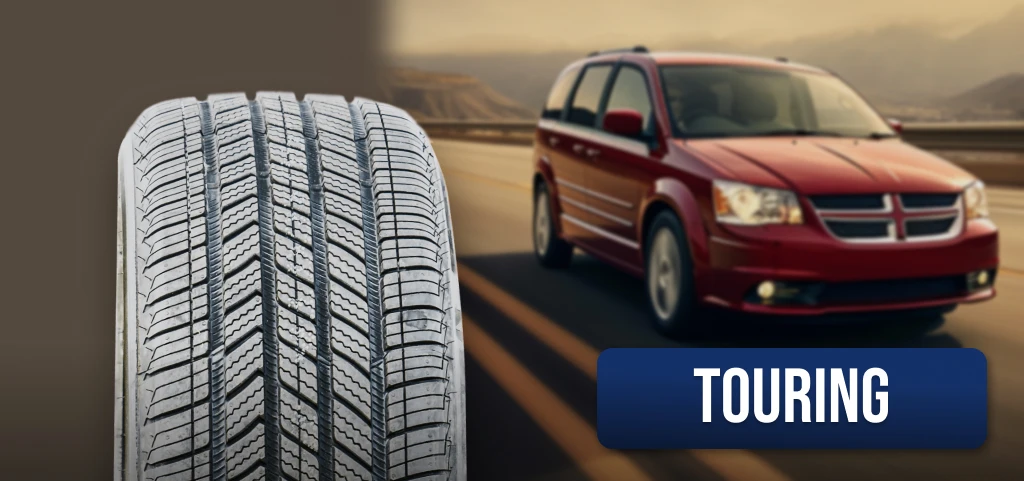
Touring tires are meant for doing long stretches of driving on highways or country roads, aka touring. They are about as versatile as all-season tires but are going to give you a smoother ride.
Touring tires also tend to last longer, which makes them optimal for that cross-country road trip you’ve been planning. Overall, touring tires are a great choice and can handle almost any conditions you might encounter.
Tires for SUVs and trucks: highway, mud, all-terrain, all-purpose
When it comes to slightly larger vehicles like SUVs, vans, and pick-up trucks, there are more specialized tires that you can use. While many of these are also available for standard vehicles, the conditions they are made for are best tackled in larger vehicles.
Mud, all-terrain, and all-purpose tires are called “off-road” tires because they are made specifically for driving on dirt or no roads. Truck tires are similar to standard vehicle tires in many ways but tend to be slightly larger and stronger.
Highway tires
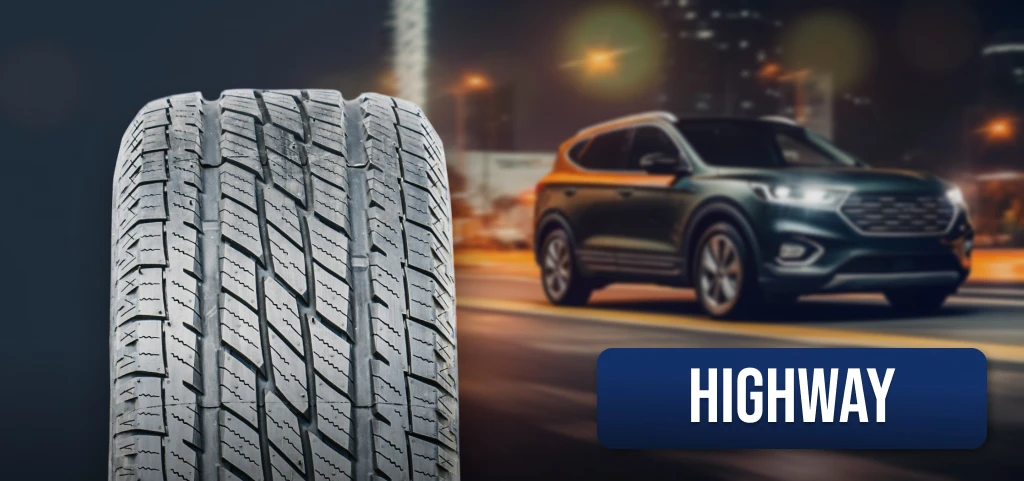
Highway tires are similar to your standard all-season or touring tires but are made specifically for trucks and SUVs. They will provide a smooth and comfortable ride on most roads and have a long tread life. They are made to handle the heavier weight of larger vehicles, so don’t worry about loading up the bed of your pick-up truck.
Overall, highway tires are a great option for someone with a truck or SUV that won’t be going off-road very often and is looking for a long-lasting, easy-to-maintain, and use tire.
Mud terrain tires
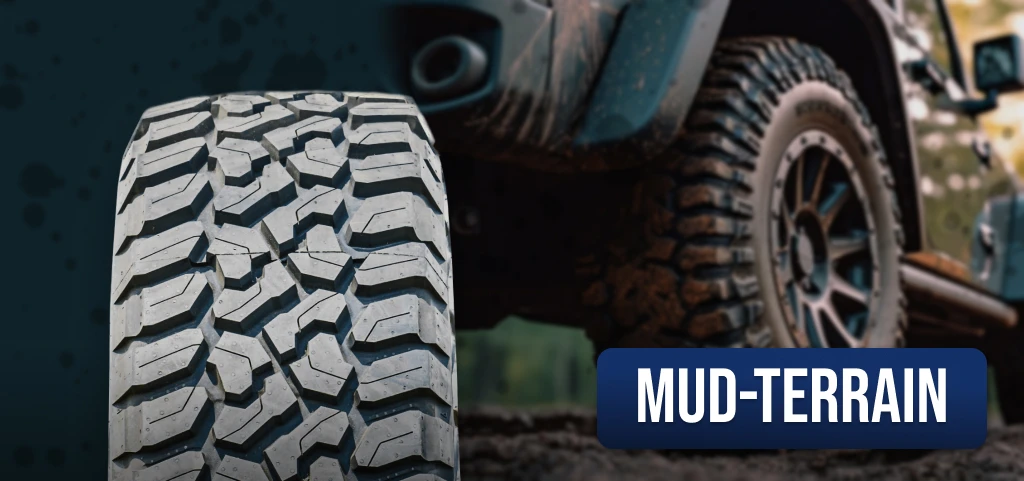
On the opposite end of the spectrum from highway tires are mud terrain tires, which are made to handle… mud! The tread on mud tires consists of large blocks of tread and large, deep spaces in between. These distinctive tread patterns allow the tires to grip in soft, wet, muddy conditions where other tires would simply spin. The tread blocks are so tall that they almost act like an oar, pushing the mud back and the car forward.
Mud tires also come equipped with a thicker sidewall than most other kinds of tires. This is because of the likelihood of the tire sidewall rubbing against a stone, root, etc., while driving in muddy conditions. The thicker sidewall helps to reduce punctures and rips.
Mud tires should not be driven on regular paved roads for any length of time. Not only will they create a bumpy, uncomfortable, and loud ride, but the precious tread which makes them so good at performing in the mud will be worn down quickly. These tires are true specialists and should be used only for their intended purpose.
All-terrain tires
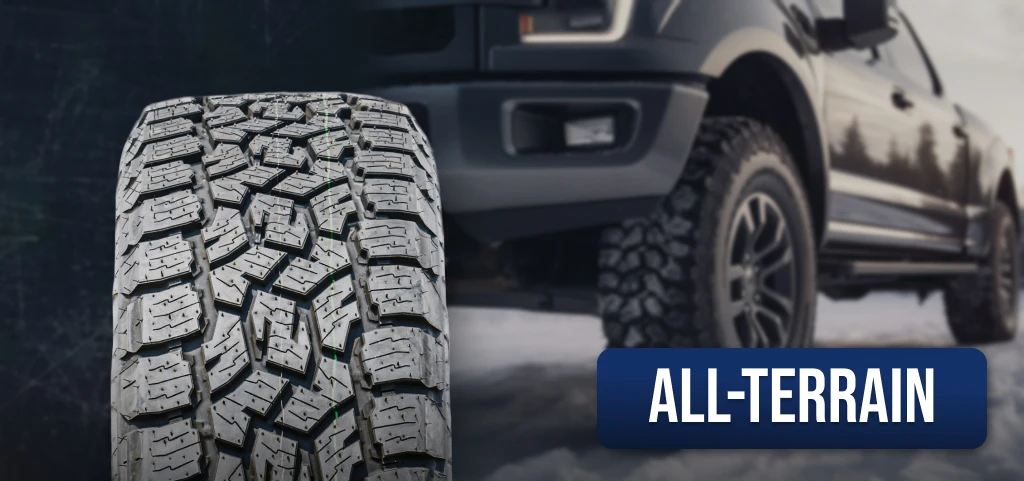
You can think of all-terrain tires as a cross between mud terrain tires and highway tires. The larger tread blocks and deep grooves provide that much-needed traction over rough terrain such as dirt, sand, gravel, mud, etc. However, all-terrain tires are smooth enough for paved roads and even highways.
While tall-terrain tires won’t give you as great performance on the highway as highway or even all-season tires, they do offer a smooth ride, and you would hardly notice the difference. If you transition quickly from off-road to on-road conditions in a single journey, all-terrain tires might be right for you.
All-purpose tires
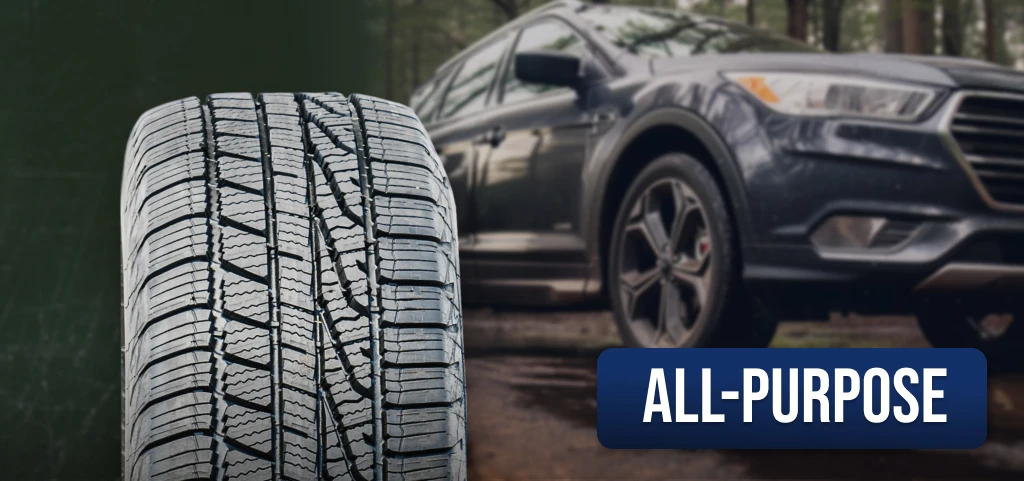
All-purpose tires are somewhere between highway tires and all-terrain tires. The tread patterns will provide decent grip in off-road situations such as dirt, sand, or gravel but still give you a smooth ride on the highway and other paved roads. You can think of them as “light” all-terrain tires.
If you expect to drive on the occasional dirt road or might have to cover a bit of bumpy ground occasionally, all-purpose tires might be the right fit for your vehicle.
Other kinds of tires we didn’t cover yet
What?! There’s more? That’s right, just when you thought it was over, we’ve got a few more kinds of tires to tell you about. Most of these are specialist tires and won’t apply to your everyday driver, but understanding what makes them unique will help you know more about tires and ultimately help you choose the right tire for your vehicle and situation.
Performance tires
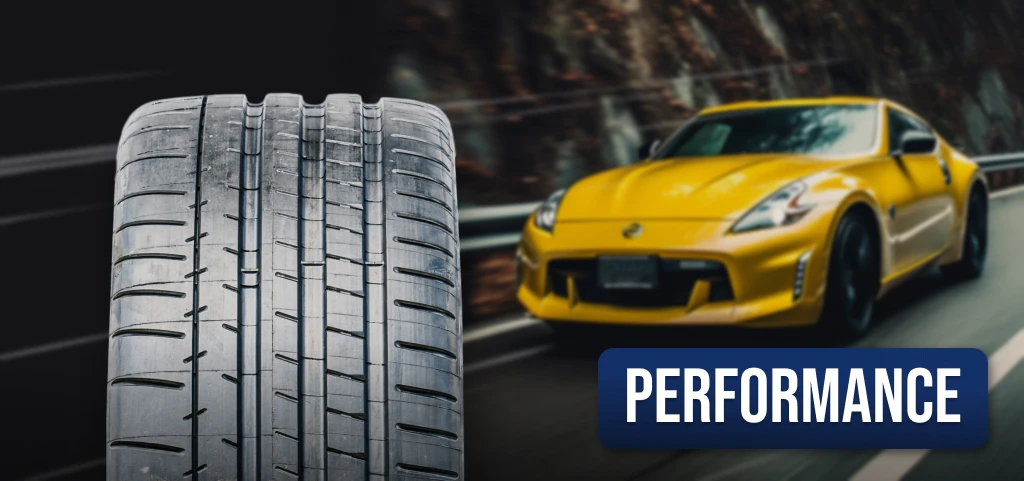
Performance tires typically get confused with summer or touring tires, but slight variations exist. Performance tires are meant for sports cars; they are meant for speed. You will notice that performance tires have a very smooth tread pattern (fewer grooves, shallower tread, no sipes) which means less friction to slow them down.
In addition to this increased speed, performance tires have greater handling and traction. However, this comes at a price, as the tread will wear down fairly quickly. Performance tires can be broken down even further into:
- Standard performance tires
- High-performance tires
- Ultra-high performance tires
- Max performance tires
The performance increases as you go down the list, but the tread life decreases.
If you own a sports car, performance tires are your obvious choice. The higher speeds you want to achieve, the more extreme (and the higher tread wear) tires you need to get.
Snow and ice tires
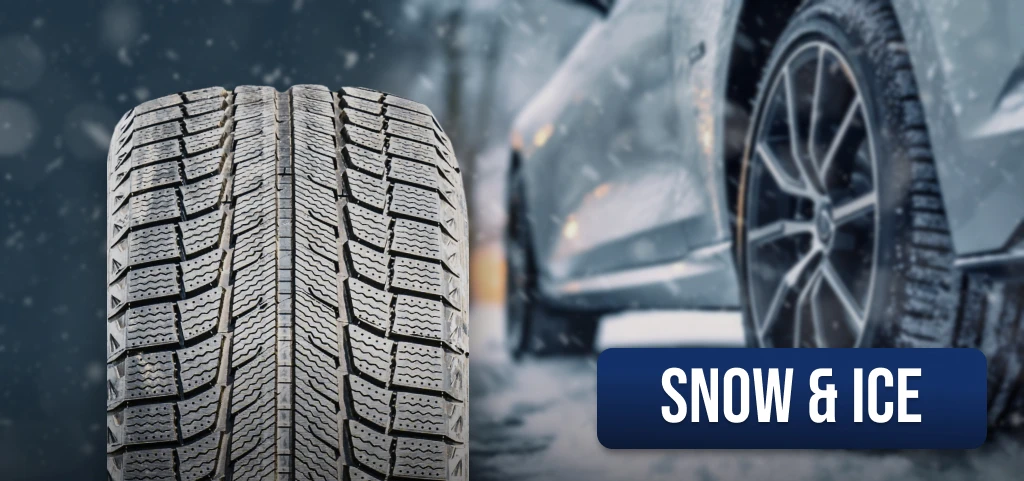
For the record, no tire company makes tires specifically for snow or specifically for ice, but there are winter tires that are designed to handle one more so than the other. Just like the performance tire, snow and ice tires are terms that are often used interchangeably with winter tires. However, there are some slight variations. You can think of them as a subset of winter tires, each more specialized.
Snow/ice tires have many of the same features as winter tires (such as the deep tread patterns, sipes, softer rubber, etc.) but to an even greater degree. Think of all-season tires as sneakers, winter tires as boots, snow tires as snow shoes, and ice tires as crampons.
Studded tires
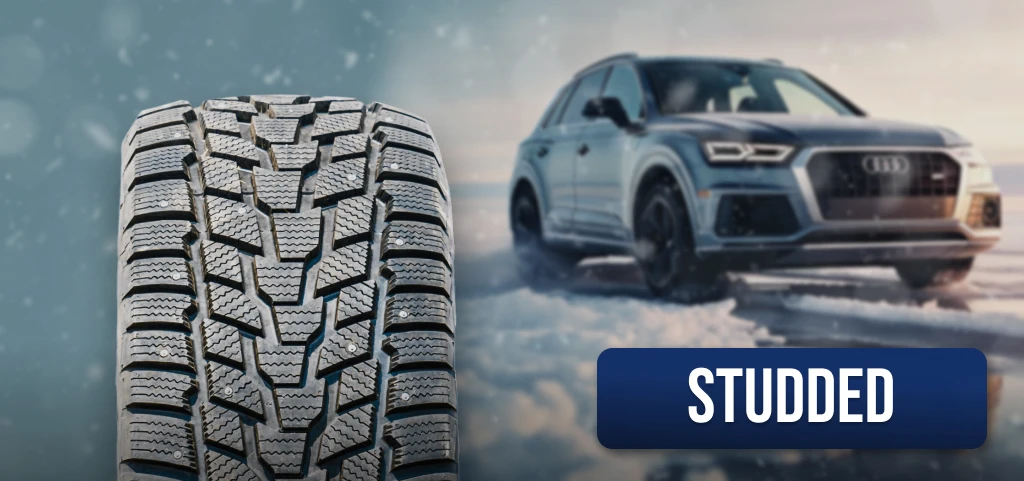
You can think of studded tires as winter tires with armor on. The tread pattern and design are basically a winter tire with dozens or even hundreds of tiny metal spikes sticking out of the tread. These studs dig into the snow and ice like a pair of crampons do, providing greater traction, especially while braking. These tires are extreme and quite expensive.
The usage of studded tires is controlled by the Traction laws (different in each state) that determine the periods of the year when these tires can be used (for example, Colorado, Kentucky) or completely forbid them (for example, Alabama and Minnesota). Studded tires damage the tarmac and create significant noise. Today some states (for example, Utah) plan to ban studded tires for good. Modern technology allows creating the rubber less extreme in all ways, where the specialized compounds and treads substitute the “old school” studs—studless tires.
Generally, this term is used to describe winter tires without studs. But before you decide, you should know that these a “new generation” winter tires. They are made of “progressive” rubber compounds that would work best in extreme conditions and have special tread patterns designed to withhold these conditions.
Both studded and studless tires are designed to withstand extreme weather conditions—and get to places where the other winter tires can’t. If you are lucky to live in a place like that, you already know your Traction law and have most likely purchased the set of either.
Run-flat tires
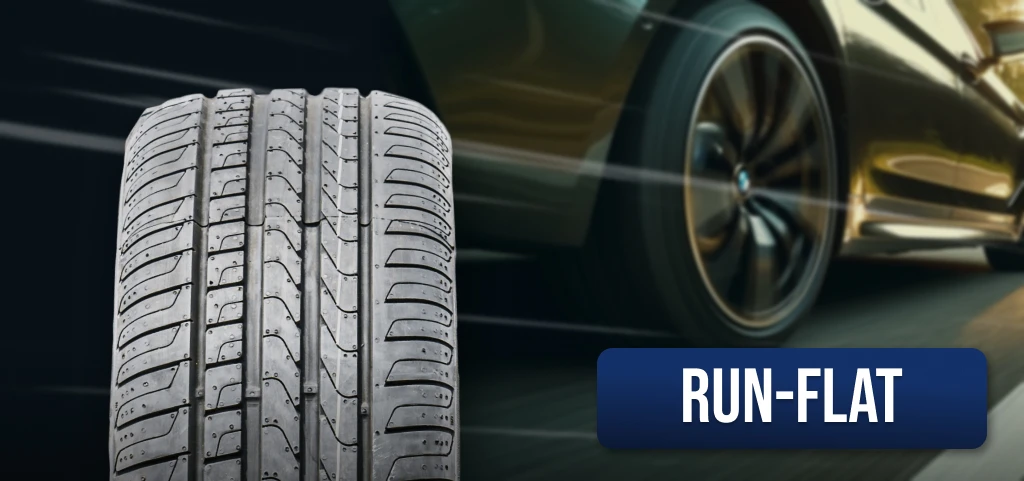
Run flat tires will let you continue driving even after your tire has been punctured and lost all air pressure. They are made with extra strong sidewalls that allow the tire to maintain its shape even after losing air pressure. However, you can not indefinitely drive on a run flat tire (after it’s been punctured); the sidewall will give out eventually.
Check the specs of the specific run-flat tire if you want to see how fast and how far you drive on them once they have lost air pressure. Run-flat tires can give you peace of mind, especially if your car does not have a spare.
Spare tires
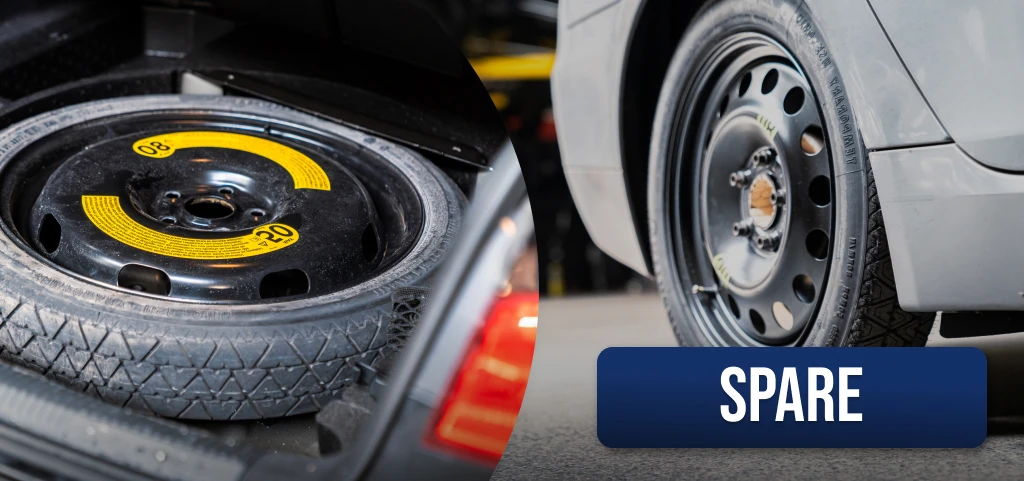
Now, this last one is a bit of a joke, as spare tires can be any kind of tire you want it to be, but it’s worth mentioning and worth having. A flat tire is a significant issue and probably one of the most common that drivers have to deal with. Having a good spare in your car can get you out of a problematic situation but remember a few things:
- Make sure your spare is in good condition
- Check that your spare tire has adequate air pressure
- Have the appropriate tools (jack, tire lever) to change spare tires
- Learn how to use the tools so that in the event of a flat tire, you can effectively change a tire by yourself
Some cars come equipped with small spare tires known as a temporary spare tire or, more commonly called, a “donut”. This smaller tire is meant as an emergency wheel to get you to an autobody shop or tire center and is not meant for high speeds or prolonged driving. A general rule of thumb for a donut is the 50-50 rule: Don’t go over 50 miles per hour, and don’t drive for more than 50 miles on it.
Frequently Asked Questions
Are snow, ice, and winter tires the same?
Yes and no. Winter tires are a general category uniting these three. But each of them is designated specifically for the conditions that the name suggests—snow tires for better performance in snow, ice tires for gripping the icy road surface better, and winter generally for better traction in harsh winter conditions and temperatures below 45 degrees Fahrenheit.
Do I need a set of winter tires?
This depends on where you live and what conditions you frequently encounter in the winter. Winter tires are unnecessary if you live somewhere with mild winters and only occasionally get a few inches of snow here and there. But if you live somewhere with long, frigid winters and frequently drive long distances through ice and heavy snow, then it is certainly recommended that you get winter tires.
I don’t have a large budget. What kind of tires should I get?
If you can only afford one set of tires or don’t want to change your tires frequently, all-season tires will be your best choice. They are the most common type of tire by far and are usually less expensive than specialty tires like performance or winter tires. Just remember to be careful in more extreme conditions!


